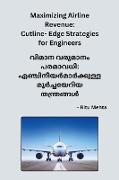- Start
- Maximizing Airline Revenue
Maximizing Airline Revenue
Angebote / Angebote:
Revenue Puzzle: Understanding the Mechanics of Airline Pricing
When we dream of a plane ride, as the sights of adventure flicker on the screen of our minds, a cold stone falls on our calculator - the price. The uncertainty of the price of an airline ticket is one of the biggest nightmares of a traveler. Suddenly, we come to a mysterious puzzle - the revenue puzzle. How do airlines set these prices? How can the same trip with seemingly no changes be given a lower price one day and a higher price the next? By examining each piece of this puzzle, we can uncover the inner workings of airline pricing.
Like any puzzle, the revenue puzzle requires a complex interplay of factors. The first is the age-old principle of supply and demand. Airline seats are limited, and as demand increases, so does the price as the number of empty seats decreases. This effect is strongest during high-demand times such as the holiday season, while prices will be relatively lower on days that are more conducive to business travel.
Another key factor is competition. Airlines are constantly competing with each other for customers, and they use pricing to their advantage. If one airline lowers its prices, others are likely to follow suit in order to stay competitive. This can lead to a race to the bottom, where prices are constantly being lowered in order to attract customers.
Airlines also use pricing to segment their customers. They know that different customers are willing to pay different prices for the same product. For example, business travelers are often willing to pay more for convenience and flexibility, while leisure travelers may be more price-sensitive. Airlines use pricing to target different segments of customers with different offers.
Folgt in ca. 10 Arbeitstagen
